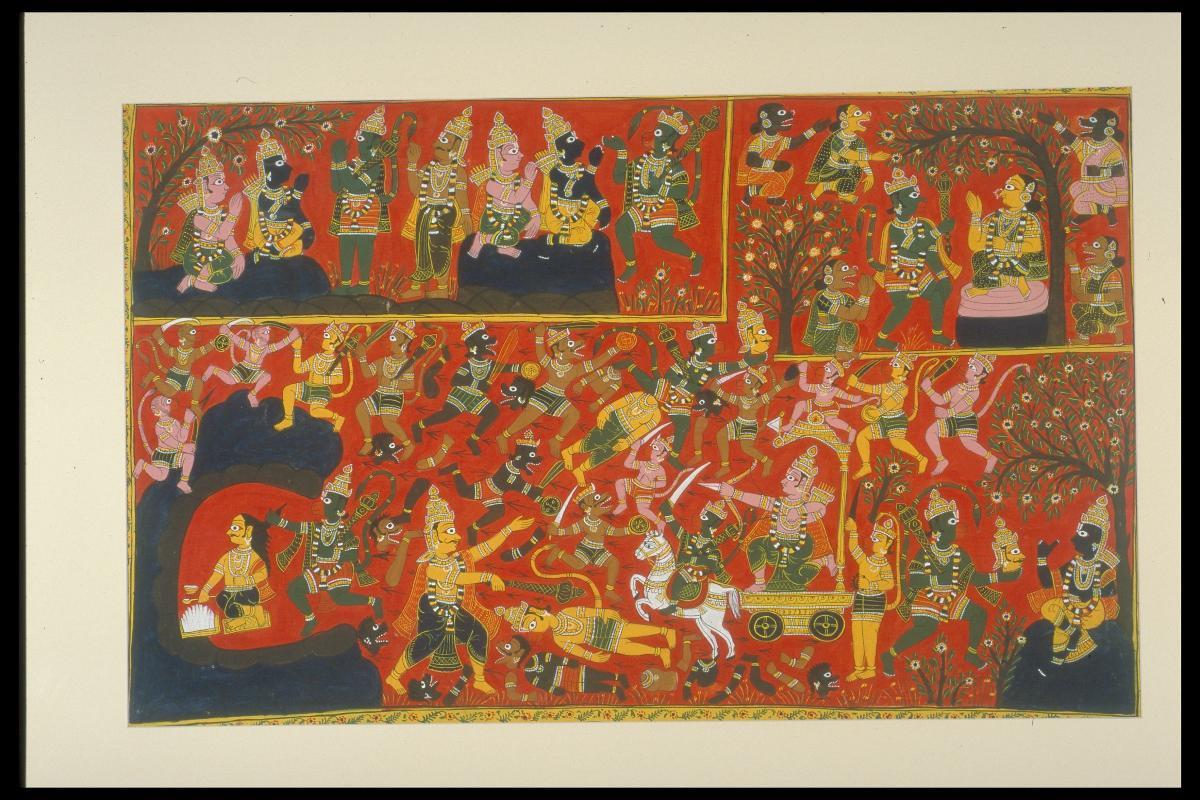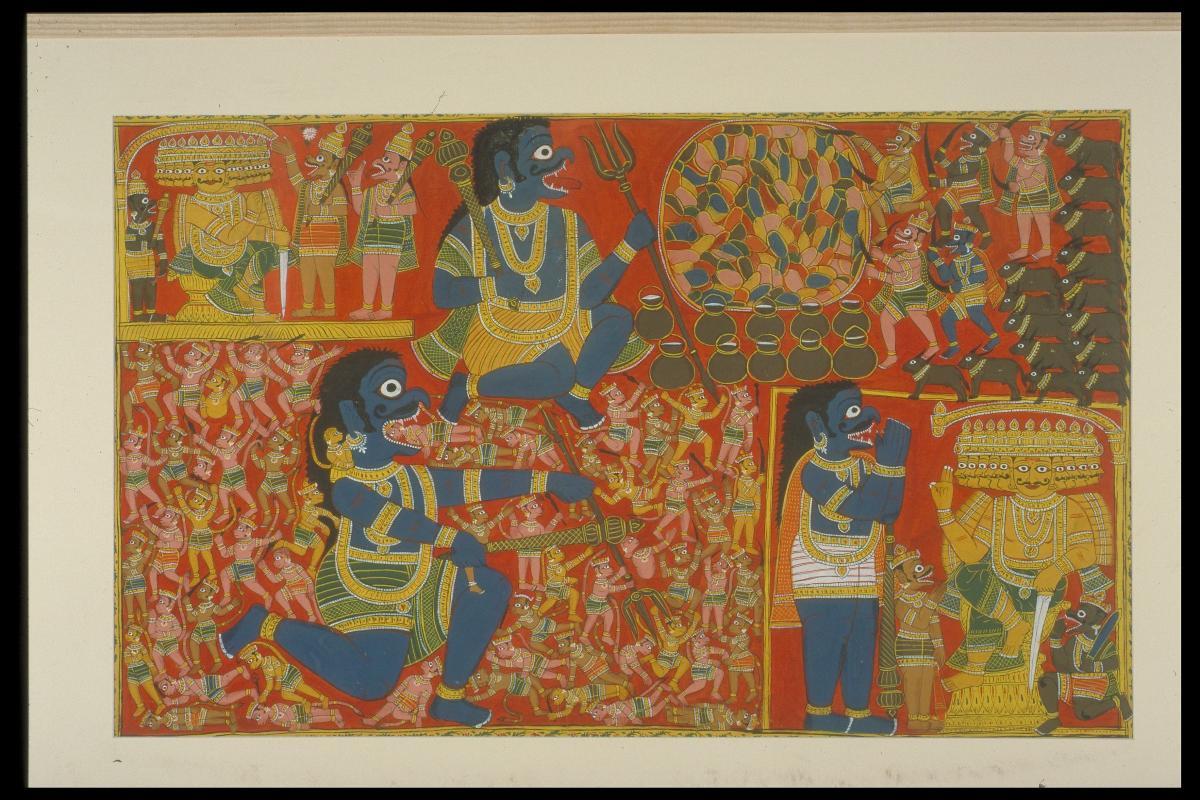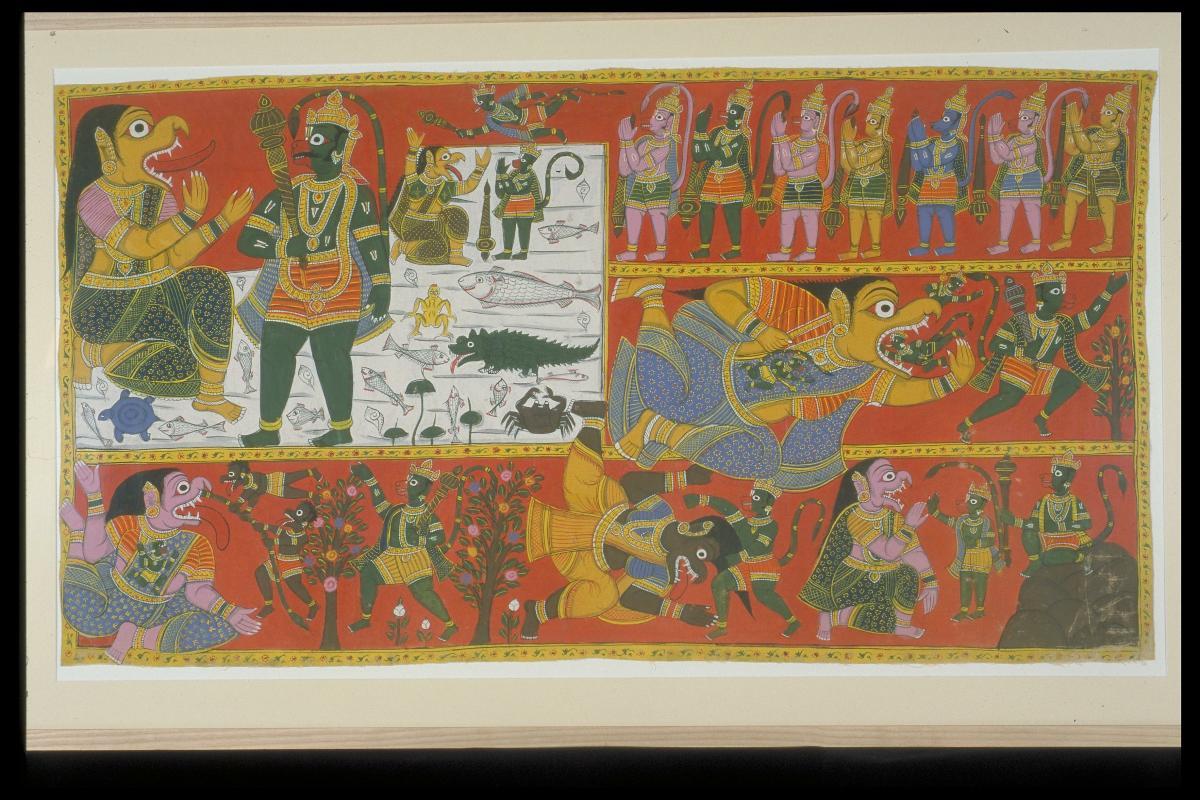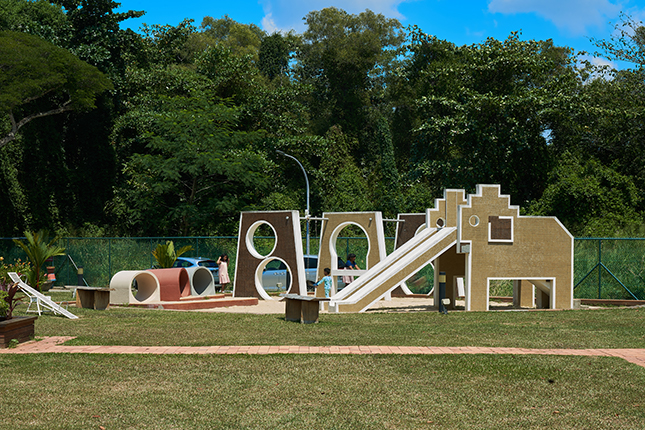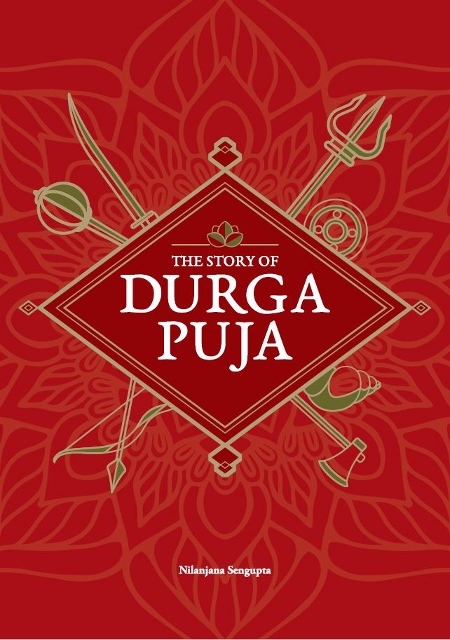There are three scenes in this painting from two different chapters of the Ramayana. The two scenes in the upper register are from the Sundara Kanda where Hanuman met Sita in the Ashoka garden in Lanka and then returned to Kishkindha to report his findings to Rama. The scene below is from the Lanka Kanda and it depicts the death of Indrajit.The top left section shows the meeting between Vibhishana, Hanuman, Rama and Lakshmana. It was Vibhishana who knew the secret of Indrajit’s invincibility as well as his vulnerability. He told Rama that Indrajit could be defeated only if he is prevented fromperforming his ritual prior to his battle. Rama asked Vibhishana, Jambavan and the monkey army to disrupt the ritual and told Lakshmana to engage Indrajit in combat.The scene at the bottom shows Indrajit performing his ritual in the Nikumbhila forest. The curved dark region suggests the cave in which Indrajit’s ritual is disrupted by Hanuman and the other monkeys. Next he is seen battling with Lakshmana, and finally Hanuman is seen taking Indrajit’s head to Rama who is seated in the bottom right corner.The use of bright red background is characteristic of the Cherial paintings where mostly primary colours are employed. Andhra painters are traditionally trained as painters of murals, or scrolls and some of them Kalamkari, a method of painting natural dyes onto cotton or silk fabric with a bamboo pen or 'kalam'. It is very rare that they paint scenes from the Ramayana on individual pieces of cloth retaining the mural tradition of painting the narrative of the story in registers. The survival of craftsmen who could reproduce the traditional style even in the 20th century is a rare phenomenon.




